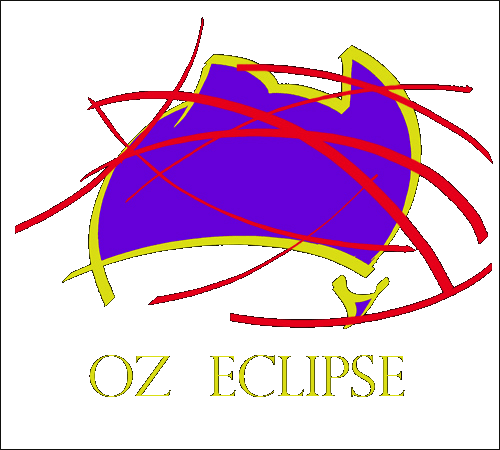
 |
WAITING FOR THE
SHADOW
SOLAR AND LUNAR ECLIPSE OBSERVINGREPORTS AND OBSERVATIONS - ZAMBIA 2001 |
|
|
|
|
|
|
|
|
|
|
Eclipse day After waking at 06:00 local time our car was 30 minutes late. It had been trapped by other parked vehicles and our driver Obet couldn't free it. The vehicle's exhaust pipe came loose in the first 5 minutes of the journey necessitating a 30 minute welding repair. We finally arrived at Kapini village at 9:00am local time and began setting up. There was a misunderstanding over whether permission had been sought to use the institute grounds and I had to go on a wild goose chase for an hour looking for the institute director. We returned at 10:30 local having not found the director and another hour down the plughole. I later learned that permission had been granted the previous week for use of the institute as I thought it had been. The trip wasted a lot of precious time. I returned to the institute and began working feverishly to assemble and adjust the balance for the instrument package. The mount was driven by an 80 tooth steel worm and wheel powered by stepper motor. A 120mm angle bracket was attached to the polar axis to which I attached two tripod heads. The mount had no declination axis. One head supported a Starspanner 80mm f5 short focus refractor (Made by the same Chinese manufacturer that makes these instruments for Celestron. The other supported a Pentax 500mm f4.5 lens with 7 element 2x converter and a Pentax PZ1 camera. The camera was loaded with Fuji Press 800asa film. Despite having tested the instrument some two days earlier, I had a great deal of trouble and could not get the mount correctly balanced until twenty minutes after first |
contact. Despite the problems, I did manage to program the camera for three minute intervals and managed to begin the partial eclipse time-lapse sequence on time. I worked on the balance during the three minute intervals between exposures. I gave the temperature and light curve experiment to two young students. I was willing to risk the data if they didn't take the data correctly as I thought it was an excellent educational exercise. In short, there were problems with the experiment. Onlookers cast shadows on the equipment including the light sensors causing erroneous data. I wrote list for the students listing all the times that the students should take data. Unfortunately, they took data too frequently getting ahead on the measurement timetable I wrote for them. They were writing data in the 4:00pm space at 3.25pm. The built-in interval timer on the PZ1 relieved me of a great deal of work and made the time lapse a relatively trivial exercise to conduct. This is the only eclipse where I've photographed all the partial phases at such precise and frequent intervals. I will make an MPEG movie from these images and my totality images. I used a Kodak ND4 filter with the camera stopped to f11( f22 effective with the 2x converter) and exposures of 1/4000 second. The cameras interval program was set for a 1 minute delay followed by 31 exposures at 3 minute intervals. Thus the first exposure was made at 11:36UT and the 31st exposure occured at 1306 UT (3 minutes prior to totality.) |
I undertook to cue the Kapini villagers through the partial phases into totality. I was having difficulty keeping them from looking through my camera with its photographic filter. Totality approached. I removed the filter and shot off the remaining 6 exposures. Some of these show a lot of flare as you might expect in a multi element camera lens. It is interesting to note that the final exposure also shows the chromosphere with approximately 100 degrees of diminishing crescent still visible. I changed the film and was ready for my totality sequence. I loaded a new film and set the lens to f8 ie f16 effective with the 2x converter and wrongly set the camera to 1/8000 second and awaited the diamond ring. The light drained rapidly from the landscape, I didn't notice shadow bands but then again I had too many things on my plate and did not particularly look for them. I counted down verbally to totality at 13hr 09m 01s and the diamond ring seemed to occur right on this time and seemed to last for ages. During this time I was firing off some exposures to attempt to capture the diamond ring but too fast. I signaled our driver Obet to honk the car horn to signal to the village that it was safe to view naked eye. I moved to look through the camera and began my totality sequence. At f16 with 800 asa Fuji press film I shot exposures from 1/8000 to 1/4 sec. As I looked through the camera, I saw that large suspended prominence at PA 60. |